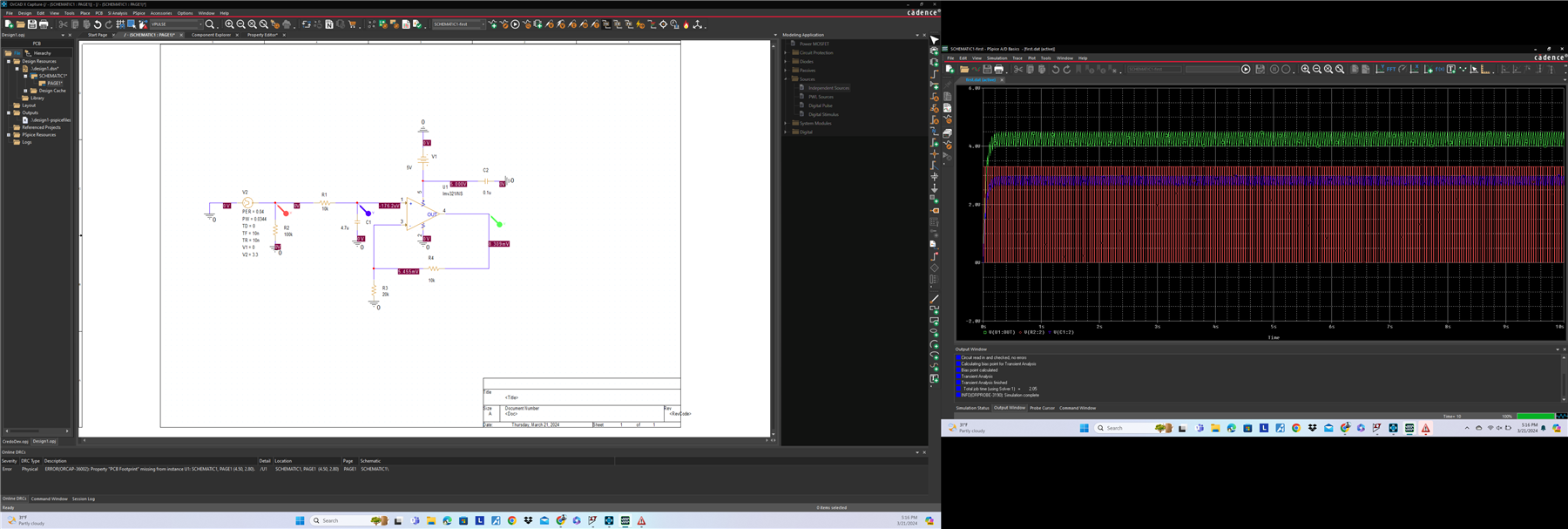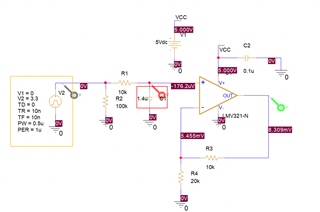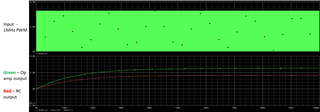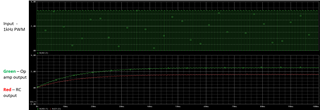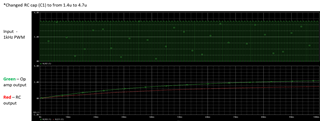Other Parts Discussed in Thread: LMV321-N
I am confused about the frequency for the PWM signal coming in. It is between 0 and 3.3 V. The C1 and R1 form a low pass filter. Which I calculated to be 33 Hz, so I thought I''l keep my frequency for the PWM signal to be 25Hz, but the response is much clean with a higher frequency...I though it should just cut the higher frequecy PWM off right. Why is this happening? what should I set the frequency of my PWM to. I am aiming for 4.25 V output, hence the duty I calculated was 86%.
